
Giant Turtle
The Greek mythological creature known as the Giant Turtle is a massive, powerful reptile that appears in various ancient Greek stories and legends. These turtles were often depicted as being large enough to support the weight of entire islands or even the entire world on their backs. In some myths, the Giant Turtle was associated with the primordial deity Gaia, the personification of the Earth. These creatures were seen as symbols of strength, endurance, and the immense power of the natural world.
Read More
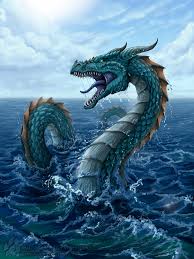
Water-Snake
The Greek mythological creature known as the Water-Snake, or Hydra, is a serpentine monster with multiple heads. According to the legends, the Hydra was slain by the hero Heracles as one of his Twelve Labors. The Hydra was said to have the ability to grow new heads whenever one was cut off, making it a formidable and challenging foe. This mythical creature is a symbol of the untamable power of nature and the difficulty of overcoming seemingly insurmountable obstacles.
Read More
Advertisement

Gigantic Snakes Of Libya
The Gigantic Snakes of Libya are mythical creatures from Greek mythology. These massive serpents were said to inhabit the deserts of ancient Libya, a region in North Africa. They were believed to be enormous in size, capable of devouring entire herds of animals and even humans. The Gigantic Snakes of Libya were considered to be dangerous and fearsome creatures, inspiring awe and terror in those who encountered them.
Read More
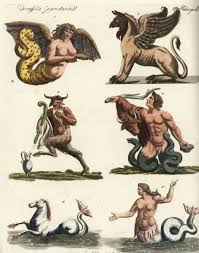
Sea Goats
Sea Goats are mythical creatures from Greek mythology that are half goat and half fish. They are often depicted as having the upper body of a goat and the lower body of a fish or a serpent. Sea Goats were associated with the sea god Poseidon and were believed to have the ability to navigate the treacherous waters of the ocean. They were also thought to have the power to control the tides and the currents of the sea.
Read More
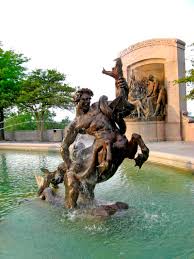
Aphros
Aphros is a Greek mythological creature, specifically a sea deity. He is one of the Tritons, the mermen companions of the sea god Poseidon. Aphros is often depicted as having the upper body of a human and the lower body of a fish or dolphin. In some versions, he is described as having green skin and seaweed-like hair, reflecting his aquatic nature. As a Triton, Aphros is believed to have the ability to control the waves and currents of the sea.
Read More
Advertisement
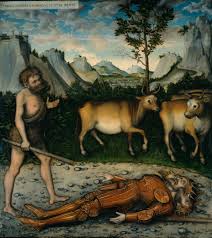
Cattle Of Geryon
The Cattle of Geryon were a herd of magical red cattle owned by the monster Geryon in Greek mythology. Geryon was a three-bodied or three-headed giant who lived on the island of Erytheia in the far west of the Mediterranean Sea. The cattle were guarded by the herdsman Eurytion and the two-headed dog Orthrus. As one of his twelve labors, the hero Heracles was tasked with stealing the cattle from Geryon.
Read More
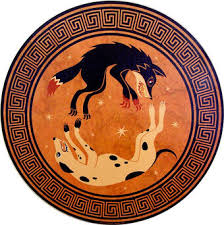
Teumessian Fox
The Teumessian fox is a creature from Greek mythology. It was a gigantic, magical fox that was destined never to be caught. The Teumessian fox was sent by the gods to punish the Thebans, but it was eventually trapped by the divine hound Laelaps, which was also destined to always catch its prey. The two creatures were turned into stone by Zeus to end the paradox.
Read More

Snakes Of Hera
The Greek mythological creatures known as the Snakes of Hera were a group of serpents that were associated with the goddess Hera. These snakes were said to have been sent by Hera to torment and harass her husband Zeus and his mortal lovers. The Snakes of Hera were often depicted as large, venomous serpents that were capable of wreaking havoc and causing great destruction.
Read More
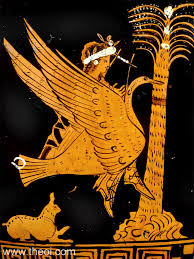
Swans Of Apollo
The swans of Apollo are mythical creatures from Greek mythology. They are associated with the Greek god Apollo, the god of music, poetry, and the sun. In Greek mythology, Apollo is often depicted riding a chariot pulled by a team of swans. The swans are considered sacred to Apollo and are believed to have the ability to sing beautifully, especially when they are about to die.
Read More

Cyprian Centaurs
Cyprian Centaurs were a group of centaurs from the island of Cyprus in Greek mythology. Centaurs were mythical creatures with the upper body of a human and the lower body and legs of a horse. The Cyprian Centaurs were known for their wild and unruly behavior, often engaging in drunken brawls and causing mischief. They were considered to be a distinct subgroup of centaurs, differing from the more well-known centaurs of mainland Greece.
Read More
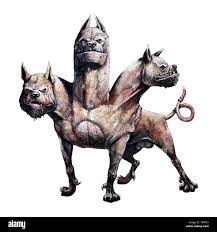
Multi-Headed Dogs
Greek mythology is rich in fantastical creatures, and the multi-headed dogs are among the most iconic. These mythical beasts, often referred to as Cerberus, were guardians of the underworld, tasked with preventing the living from entering and the dead from escaping. Cerberus was typically depicted as having three heads, though some accounts describe it as having up to fifty heads. These fearsome creatures were believed to possess the ability to detect any intruders and were known for their fierce loyalty to the god Hades, the ruler of the underworld.
Read More
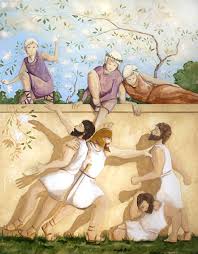
Lotus-Eaters
The Lotus-Eaters were a mythical people encountered by Odysseus and his crew in Homer's Odyssey. They were a group of people who lived on an island and subsisted entirely on the lotus plant. The lotus had a narcotic effect, causing those who ate it to become apathetic and forget their desire to return home. Odysseus had to forcibly remove his crew from the island, as they had become content to remain there and eat the lotus.
Read More
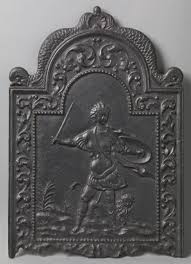
Lion Of Cithaeron
The Cithaeronian Lion was a monstrous lion that terrorized the region around Cithaeron, a mountain range in ancient Greece. It was known for its immense size, strength, and ferocity. The Cithaeronian Lion was eventually slain by the hero Heracles as one of his Twelve Labors, a series of challenges set by the gods. This legendary creature was a symbol of the untamed power of nature and the heroic deeds required to overcome it.
Read More
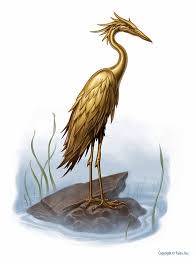
Stymphalian Birds
The Stymphalian Birds were a flock of man-eating birds in Greek mythology. They were said to have beaks of bronze, sharp metallic feathers they could launch as weapons, and a fondness for human flesh. The birds were eventually driven away from the town of Stymphalos by Heracles as one of his twelve labors, using a rattle given to him by the goddess Athena to scare them off.
Read More
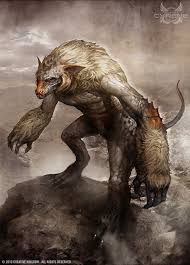
Cynocephaly
Cynocephaly refers to the mythical creatures in Greek mythology that were said to have the head of a dog and the body of a human. These creatures were often depicted as fierce, savage, and uncivilized beings that lived in remote or exotic regions. They were believed to have the ability to speak, and were sometimes associated with the worship of the Egyptian god Anubis. Cynocephalic figures have been found in various ancient Greek and Roman artifacts, suggesting that they were a significant part of the mythological and cultural landscape of the ancient Mediterranean world.
Read More

Winged Centaurs
Winged centaurs are mythical creatures from Greek mythology that are depicted as having the upper body of a human and the lower body and legs of a horse, with the addition of wings. These hybrid creatures were often associated with the god Dionysus and were known for their wild and unruly behavior. They were sometimes portrayed as skilled archers and musicians, but also as prone to drunkenness and violence. Winged centaurs were a unique variation of the more common centaur, and their inclusion of wings added an additional layer of power and mysticism to these legendary beings.
Read More
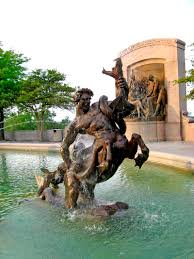
Bythos
Bythos is a figure from Greek mythology, specifically from the Orphic cosmogony. In this tradition, Bythos is considered the primordial abyss or depth, the first principle from which all other elements of the universe emerged. Bythos is often paired with Chronos, the personification of time, as the two primal forces that gave rise to the cosmos. While not a widely known figure, Bythos represents the fundamental, unfathomable depths from which the Greek pantheon and the world itself were born.
Read More

Asbestos
Greek Mythology Creatures: Greek mythology is rich in fantastical creatures, such as the Minotaur, Cerberus, and Medusa. These mythical beings often possess supernatural abilities and play significant roles in the stories and legends of ancient Greece.
Asbestos: Asbestos is a naturally occurring mineral that was widely used in construction and manufacturing due to its heat-resistant and durable properties. However, it has been found to be a carcinogenic material, and its use has been heavily regulated or banned in many countries due to the health risks associated with exposure.
Read More

Catoblepas
The Catoblepas is a creature from Greek mythology. It is described as a large, heavy-bodied creature with a massive head that is constantly lowered towards the ground. The Catoblepas is said to have the power to kill with its gaze, and its breath is also believed to be poisonous. It is often associated with the swamps and marshes of Ethiopia.
Read More
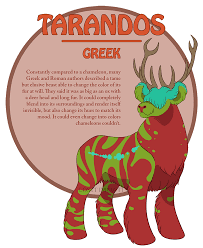
Tarandos
The Tarandos is a creature from Greek mythology. It is a type of deer-like animal that was believed to have the ability to change the color of its fur to blend in with its surroundings. The Tarandos was said to be found in the northern regions of the ancient Greek world, and was sometimes associated with the god Artemis, the goddess of the hunt. While not as well-known as some other Greek mythological creatures, the Tarandos was an interesting and unique part of the rich tapestry of Greek mythology.
Read More
Load More